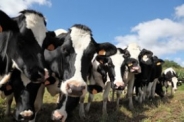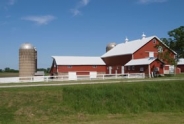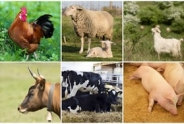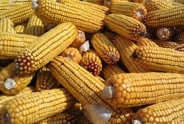Be on the Lookout for Horseweed...A.K.A Marestail
Mike Hunter, Field Crops Specialist
North Country Regional Ag Team
March 25, 2016

In January, I wrote an article about implementing strategies to delay herbicide resistant weeds from becoming a problem (article is found at http://bit.ly/1U3RFc4). This month I would like to share information about marestail and the potential threat it poses to our crops. Dr. Russ Hahn, Cornell University, has also presented information about marestail at many NNY crop meetings over the last few years. There is strong evidence to believe we have glyphosate resistant marestail in Central and Western New York.
Marestail is a weed that is found in our area but most everyone would agree that it is not considered a problematic weed at this point. It is found in fallow fields, ditch banks and roadsides. We will occasionally see it in corn or soybean fields in NNY. It is typically found in no till or zone till fields so this may be one reason why we don't see a lot of it in our cultivated fields. However, as no till acres increase we could expect so see shifts in weed populations on these farms.
Marestail is a winter or summer annual which reproduces by seed (See Fig 1 and 2). A mature marestail plant is capable of producing as many as 200,000 seeds. It will germinate in the spring or late summer and reaches heights of six feet tall. Most notable about marestail is the seeds can easily be dispersed by wind. The seeds are attached to a featherlike structure or pappus, similar to a dandelion. Research studies in the mid-Atlantic Region of the U.S., suggests that once the seeds get into the sky they can easily disperse more than 100 miles.
If we were to look at areas in New York where the suspected glyphosate resistant marestail populations are we probably would not be too concerned that seeds from those areas could reach us. However, I recently attended the Eastern Ontario Crop Conference in Kemptville, Ontario and at that conference I learned of populations of glyphosate resistant marestail (A.K.A Canada Fleabane in Ontario) much closer to our area than Central and Western New York (see Map 1). In fact, one of the confirmed locations near Napanee, Ontario is only 25 miles "as the crow flies" from Cape Vincent, NY. The prevailing winds could easily transport these seeds to the North Country.
I would encourage everyone to be on the lookout for marestail. If you suspect that you have it on your farm and would like a positive identification feel free to contact me and I will be more than willing to assist. I can be reached by phone (315) 788-8450 or email meh27@cornell.edu.
Announcements
No announcements at this time.





